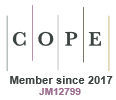A survey of prefilled, bolus-dose syringes containing single medications compounded in community pharmacies for palliative care patients in Tāmaki Makaurau Auckland, Aotearoa New Zealand
E. C. Griffiths 1 , S. M. Hanning 1 , S. S. Thakur 1 , D. A. Gargiulo 1 *
1 *
1
Abstract
In Aotearoa New Zealand, prefilled syringes for patients receiving palliative care in the community can be prepared (compounded) by certain pharmacies. Currently, there is limited information regarding the scope of compounding these prefilled syringes.
The study aimed to explore the range of subcutaneous bolus-dose medications and the compounding processes used in community pharmacies in Tāmaki Makaurau Auckland when preparing prefilled syringes used for anticipatory needs in patients receiving palliative care.
A convenience sample of community pharmacies contracted to prepare prefilled syringes was invited to complete an online survey. Information was requested on the medications compounded for bolus-dose syringes over the previous 6-month period, including what medications and facilities were used, how expiration dates were determined, and the time spent preparing these syringes.
Data were requested on compounding between 1 September 2022 and 28 February 2023 with complete responses received from 8 of the 40 pharmacies invited to participate. The top four medications compounded, in rank order, were midazolam, oxycodone, haloperidol, and morphine sulfate. All eight pharmacies compounded syringes in a still air box, and ‘published guidance’ was the most common source of expiration dates. Most respondents each reported spending 5–10 h per week preparing the compounded products.
Community pharmacies in Tāmaki Makaurau Auckland compounded a range of medications as bolus-dose prefilled syringes for patients receiving palliative care. These results will inform future planned studies on the stability and sterility of these syringes.
Keywords: aseptic services, bolus-dose, community pharmacies, compounding, electronic survey, palliative care, prefilled syringes, subcutaneous.
References
2 Health New Zealand Te Whatu Ora. Building the future of health; 2024. Available at https://www.tewhatuora.govt.nz/ [accessed 8 August 2024].
3 Aseptic Compounding Training and Validation (ACTiVe). Welcome to the FMHS Online Store; 2024. https://store.fmhs.auckland.ac.nz/pharmacy/ [accessed 8 August 2024].
4 Gargiulo D, Kairuz TE. Aseptic compounding in New Zealand and the use of still air boxes. Int J Pharm Compd 2006; 10: 293-295.
| Google Scholar | PubMed |
6 Standards New Zealand. Health and Disabilities Service – Pharmacy Services (NZS 8134.7:2010); 2024. Available at www.standards.govt.nz/shop/nzs-8134-72010/ [accessed 12 January 2024].
7 Kemp L, Holland R, Barclay S, et al. Pre-emptive prescribing for palliative care patients in primary care. BMJ Support Palliat Care 2012; 2: A2.
| Crossref | Google Scholar |
8 Auckland Region Community Health Pathways. Medical, Palliative Care, Syringe drivers, participating pharmacies; 2024. Available at https://aucklandregion.communityhealthpathways.org [accessed 8 August 2024].
9 Sharma A, Minh Duc NT, Luu Lam Thang T, et al. A consensus-based Checklist for Reporting of Survey Studies (CROSS). J Gen Intern Med 2021; 36: 3179-3187.
| Crossref | Google Scholar | PubMed |
10 Healy S, Israel F, Charles M, et al. Laycarers can confidently prepare and administer subcutaneous injections for palliative care patients at home: a randomized controlled trial. Palliat Med 2018; 32: 1208-1215.
| Crossref | Google Scholar | PubMed |
11 Ministry of Health. Te Ara Whakapiri: Principles and guidance for the last days of life; 2017. Available at https://www.tewhatuora.govt.nz/publications/te-ara-whakapiri-principles-and-guidance-for-the-last-days-of-life/#te-ara-whakapiri-toolkit [accessed 8 August 2024].
12 Jones W, Randall C. Te Puka Manaaki Pairuri o Aotearoa – Putanga Tuatahi The Palliative Care Handbook New Zealand – First Edition; 2025. Available at https://www.hospice.org.nz/palliative_care_handbook [accessed 29 June 2025].


